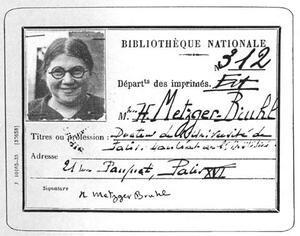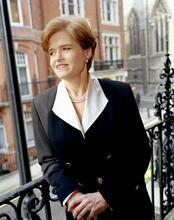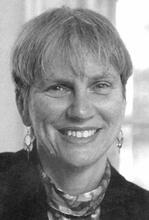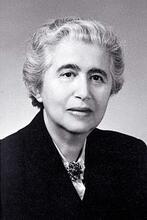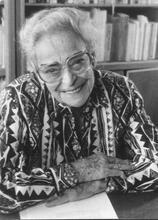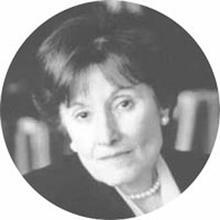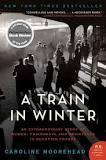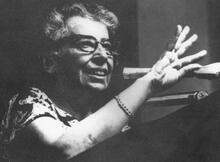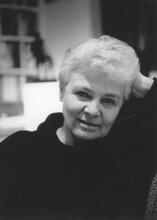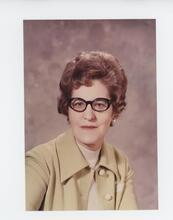Hélène Metzger
Hélène Metzger was a historian of chemistry and a philosopher of science, whose work remains influential today. Born into a wealthy family in France in 1889, Metzger grew up very introverted and independent–characteristics that were to influence her scientific career. After the death of her husband in 1913 Metzger devoted herself to science, as well as to some social work. She published many influential works on the history of various fields of sciences. During World War II she remained in Paris until late 1941 before moving to Lyon. She was arrested in 1944 and did not survive the war. Upon her death, fellow victims noted her courage and cheerfulness.
Hélène Metzger was a French historian of chemistry and philosopher of science, whose work has remained influential to this day.
Family and Education
Metzger was born as Hélène Emilie Bruhl at Chatou (Département Seine-et-Oise, near Paris) on August 26, 1889, to Eugénie Emilie Adler (born in 1864 in Frankfurt/M.) and to Paul Moïse Bruhl (1855–1922), a grandson of Isaac Bruhl, a celebrated Worms Wunderrebbe. Paul's father, David (1823–1901), had emigrated from Worms to the USA, where some technological innovations made him a wealthy man. Returning to Europe, he settled in France and acquired a large property at Chatou. His two children were Paul, Hélène’s father, and Alice Louise, who in 1882 married Lucien Lévy, who thereafter called himself Lévy-Bruhl. This famous philosopher and anthropologist had a life-long beneficial influence on his niece Hélène.
When Hélène was only two years old, her mother died while giving birth to Louise, her second daughter. Paul Bruhl then married Marguerite Casevitz, giving Hélène three half-brothers, among them Adrien, who was to become a celebrated scholar. Hélène grew up as an unhappy, very introverted, single-minded, and independent child—characteristics that were to influence her scientific career.
Paul Bruhl was a wealthy jeweler, who did not think his daughters should have professions of their own. Hélène thus acquired not the baccalauréat, which was indispensable for a full curriculum at the university, but rather the lower brévet supérieur, which allowed for a university study of three years only. Having obtained it, she studied crystallography at the Sorbonne, the choice of the discipline perhaps being related to her father’s commerce. In 1912, she obtained a Diplôme d'études supérieures in this discipline, which, however, did not allow her to continue for a Doctorat d'État, the necessary condition for becoming a university professor.
On May 10, 1913, Hélène married Paul Metzger (born July 29, 1881 to a Jewish family in Alsace), a brilliant young scholar. Paul Metzger was killed in September 1914, in one of the first battles of World War I, leaving Hélène childless and in what seems to have been perpetual grieving for the rest of her life. From then on, Metzger devoted herself to science, as well as to some social work.
Metzger’s Studies and Publications
During the war, within no specific intellectual or institutional context, she wrote her first book, La génèse de la science des cristaux (The Emergence of the Science of Crystals). After some difficulties, she succeeded (in 1918) in having it accepted as a doctoral thesis (a Doctorat d'université, however, rather than the far more prestigious Doctorat d'État). Thereafter she began attending courses of philosophy at the Sorbonne, and eventually decided to turn her attention to the history of chemistry. A great part of her subsequent publications are in this discipline, notably Les doctrines chimiques en France du début du XVIIe à la fin du XVIIIe siècle (Chemical Theories in France from the Beginning of the 17th to the End of the 18th Century, 1923), Newton, Stahl, Boerhaave et la doctrine chimique (Newton, Stahl, Boerhaave and Chemical Theory, 1930), La chimie (a popular history of chemistry, 1930), La Philosophie de la matière chez Lavoisier (Lavoisier’s Philosophy of Matter, 1935). She thereafter turned to the history of physics and wrote Attraction universelle et religion naturelle chez quelques commentateurs anglais de Newton (Universal Attraction and Natural Religion According to Some English Commentators on Newton, 1938) and in 1940 she had begun writing Lumière et doctrine chimique de Newton à Fresnel (Light and Chemical Theory From Newton to Fresnel), a book she did not live to complete.
Metzger was an independent thinker, who cherished her independence, and vehemently resisted any attempt to influence her. In a recently discovered letter to Émile Meyerson, who, she felt, tried to patronize her, she poignantly tells him her mind, giving us an insight into how conflicting her relationships with the Paris mandarins must have been. As a result, and to her great regret and disappointment, Metzger never had an academic (or other) position. Though she was associated with various research groups in Paris, she remained an outsider, “a perpetual junior member in the groups she frequented” (C. Chimisso). This status, doubtless related to her being a woman, especially one with a fairly low self-image, was made possible by Metzger’s economic independence. However, she found recognition and much comfort from a number of great scholars, notably André Lalande in Paris (who arranged a literary prize for her in 1924), and George Sarton at Harvard, the founder and editor of Isis, the major journal in the history of science, with whom she regularly exchanged letters. The publication of Metzger’s picture on the cover of Isis (vol. 94, no. 3 [September 2003]), in a way does her ultimate justice, be it almost sixty years after her death.
Metzger’s approach to the history of science was original in that it sought to avoid any anachronism; she tried to capture the thought of the scientists of the past in their own terms, retrace the genesis of their ideas. At the same time, in line with much of contemporary French thought, she wished to integrate the study of the history of science within the larger framework of a global theory of the human mind, which she assumed to be one and the same for all periods and cultures. It is owing to her anti-positivistic historical method, which today is shared by most historians of science, that Metzger’s work is still appreciated and used today. (The late Thomas S. Kuhn’s favorable mention of Metzger in his celebrated The Structure of Scientific Revolutions [1962] played a determining role in this respect.) Methodological disagreements with colleagues led her in the 1930s to write a series of articles explicating her historiographical method (collected in La Méthode philosophique en histoire des sciences).
Experiences during World War II
In 1933 Metzger played an important role in efforts to move the International Congress for the History of Science, scheduled to be held in Berlin in 1934, to another place; it was finally held in Coimbra. Her correspondence on this matter shows an early and keen insight into the nature of the Nazi régime.
Like many other French Jews, she had great confidence in the French state and after the occupation did not go into hiding. She remained in Paris until late 1941 and then moved to Lyon, where, again, she did not hesitate to register as a Jew. During the more than two years she remained there, she took part in an extraordinary enterprise: the “Bureau d'études juives” (Office for Jewish Studies), an informal group of persons—professors, teachers, lawyers, high state officials, publishers, etc.—who had been dismissed from their positions and who met weekly in order to study Judaism. Most of these people had had a very feeble relation to and knowledge of their Jewish roots, and they now gathered in order to learn something about the history of the tradition which was the cause of their misfortune. This was a heroic act of spiritual resistance: “in the troubled, dramatic and tragic period through which we live,” Metzger wrote to George Sarton in 1942, “[intellectual] effort is the only thing which can maintain us in a physical and moral stability.” In the framework of this group Metzger wrote what was to be a study of “the metaphysical foundations of monotheism.” After the war, Adrien Bruhl, Metzger’s half-brother, published the fragments of this work which Metzger had left behind her: La Science, l’appel de la religion et la volonté humaine (Science, the Call of Religion, and Human Will).
Hélène Metzger was arrested on February 8, 1944 in her Lyon pension at 28 Rue Vaubecour. She was transferred to the transit camp at Drancy on February 20, and was on transport no. 69, which left Drancy for Auschwitz on March 7. Of the 1501 “Arbeitsjuden” who were on this transport only 20 persons survived; Metzger was not among them. The British historian of science Charles Singer wrote that “fellow victims who have survived testify to her courage and cheerfulness during these months.” In view of the scientifically industrialized barbarity at Auschwitz, Metzger could tell herself that she was very farsighted when she wrote in 1936:
I think that progress is essentially perishable, that it can in fact perish, and that only a vigilant attention and a sort of virtue can offer our civilized societies a warranty against an offensive return of the barbarity of primitive times. And as this new barbarity would dispose of all the industrial achievements generated by science, it would be especially dangerous.
Selected Works
Attraction universelle et religion naturelle chez quelques commentateurs anglais de Newton. Paris: Hermann, 1938;
La génèse de la science des cristaux. Paris: Alcan, 1918; reprinted: Paris: Blanchard, 1969.
Les doctrines chimiques en France du début du XVIIe à la fin du XVIIIe siècle. Paris: Presses universitaires, 1923; reprinted: Paris: Blanchard, 1969.
Les Concepts scientifiques. Paris: Alcan, 1926.
La chimie. Paris: Boccard, 1930.
La Philosophie de la matière chez Lavoisier. Paris: Hermann, 1935.
La Science, l’appel de la religion et la volonté humaine. Paris: Boccard, 1954.
La Méthode philosophique en histoire des science, ed. by Gad Freudenthal. Paris: Fayard, 1987.
“Extraits de lettres, 1921–1944,” in Gad Freudenthal, Études sur / Studies on Hélène Metzger. Leiden: Brill, 1990, 247–269.
Newton, Stahl, Boerhaave et la doctrine chimique. Paris: Alcan, 1930; reprinted: Paris: Blanchard, 1974.
Chimisso, Cristina, “Hélène Metzger: The History of Science between the Study of Mentalities and Total History,” Studies in History and Philosophy of Science 32 (2001): 203–241. (A study of Metzger’s philosophical project in its social and intellectual settings.).
Chimisso, Cristina and Gad Freudenthal, “A Mind of Her Own. Hélène Metzger to Émile Meyerson, 1933,” Isis 94 (2003), pp. 477–491 (Metzger’s letter to Meyerson, preceded by a contextualized comparison of their philosophical projects.).
Freudenthal, Gad, ed. Études sur / Studies on Hélène Metzger. Leiden: Brill, 1990. (Contains studies of Metzger’s work, contexts, etc. as well as extracts of letters by Metzger and a complete bibliography of her writings.).
Freudenthal, Gad. “Hélène Metzger: Éléments de biographie,” in Freudenthal, Études sur / Studies on Hélène Metzger. 197–208. (The source of the above biographical sketch.)

